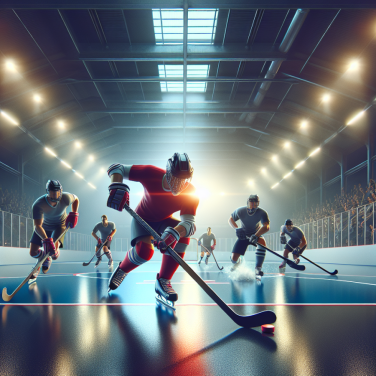Beyond the Cleats: Equipment and Strategies for Ice Football Mastery
In the thrilling world of ice football, where precision and agility meet the slippery challenge of a frozen pitch, professional players and enthusiasts alike know that mastering this sport requires more than just quick feet and a keen eye for the goal. It's a game where the right equipment and the strategic application of technique can make the difference between floundering on the ice and performing with grace and power.
When considering equipment, special care must be given to the selection of cleats—or in the case of ice football, the appropriate footwear with studs or spikes that can grip the icy surface without causing harm. Footwear designed specifically for ice football often features smaller, more concentrated spikes that allow for better traction and agility, essential for the rapid changes in direction this game demands. Additionally, players might add extra grip by wearing boot covers with additional texturing to ensure they can maneuver effectively.
However, shoes alone won't fully prepare a player for the demands of the icy pitch. Padding is also crucial because even the most skilled players can slip and fall. To protect against injury, athletes often wear padded shorts, shin guards, and even specialized padding that can be placed around vulnerable areas such as the elbows and hips. The cold environment also necessitates thermal base layers to help maintain body heat, without sacrificing mobility.
Gloves are another piece of essential gear, but they must balance warmth with the need for touch sensitivity and grip. Ice football gloves often have a textured surface to aid in controlling the ball, with insulation that doesn't impede finger movement.
On the strategic side, ice football teams must approach the game with a mindset that embraces both creativity and discipline. Passing strategies that work on grass may fall short on ice, so players must adapt by using shorter, more controlled touches and passes. A direct, long-ball game is less effective when it's easy for the ball to slide unpredictably, so teams often work on close ball control and quick, precise passing.
Defensively, positioning is key. Players must learn the art of maintaining balance and being ready to react without overcommitting, as any misstep can lead to a loss of footing and an opening for the opposition. Practice sessions often emphasize lateral movement and transitions from offense to defense to hone these essential skills.
Communication is also more critical on the ice. The natural sounds of the game are different, and the usual visual cues may be harder to interpret when everyone is bundled up against the cold.
Read also:
Mastering Your Swing: In-Depth Review of Golf Pressure Plates
Navigating the Ice: Adapting Football Skills to a Glacial Arena
As the winter season drapes a sheet of ice across playing fields, football enthusiasts refuse to hibernate. Instead, they embrace the chill and adapt their skills to the frosty stage of ice football, a thrilling variant that merges the beautiful game with the glacial polish of a rink. This adaptation requires not only technical adjustments but also a keen understanding of the icy terrain and how to navigate it safely and effectively.
The first challenge is traction. Traditional football boots are designed for grass or turf, providing grip through studs or blades. On ice, these become akin to ice skates without a blade—dangerously slick. Players have to select appropriate footwear, often with studs of rubber and metal that bite into the ice for stability. This allows them to perform with confidence, sidestepping the terror of uncontrolled slides.
With the issue of grip addressed, the next hurdle is ball control. The reduced friction of the ice drastically changes the dynamics of dribbling, passing, and shooting. Ice footballers must refine their touch, often opting for softer, more cushioned impacts to keep the ball close. Shorter, sharper passes become the norm, and long balls are avoided unless players can mitigate their uncontrollably long rolls.
Tactical strategies also demand reconsideration. The fast pace of an ice-coated pitch means strategies that work on traditional grass fields won't always translate. Positional play is tweaked to ensure that defense remains robust—overcommitting to an attack can lead to devastating counters. Goalkeepers, too, face an intense adaptation process, learning to assess trajectories that defy normal expectations and perfecting the art of agility on an unforgiving surface.
Physically, players must adapt their bodies to cope with the demands of the ice. This adaptation includes enhancing core strength to maintain balance and developing explosive power to change direction quickly. Training regimens must be updated to account for these specific needs, focusing on drills that mimic the quick, sharp movements required on the ice.
Mentally, the transformation into an ice footballer is arguably as demanding as the physical. Contending with the cold and the potential frustrations of a slippery surface makes resilience and mental toughness non-negotiable traits. Players find that the mental discipline to stay alert and focused in this unconventional environment is as vital as their physical preparedness.
Ice football isn't just a test of existing skills; it's an opportunity for innovation.




